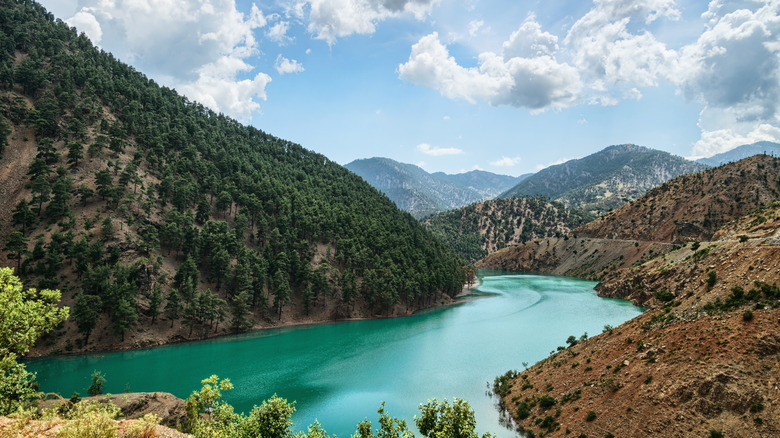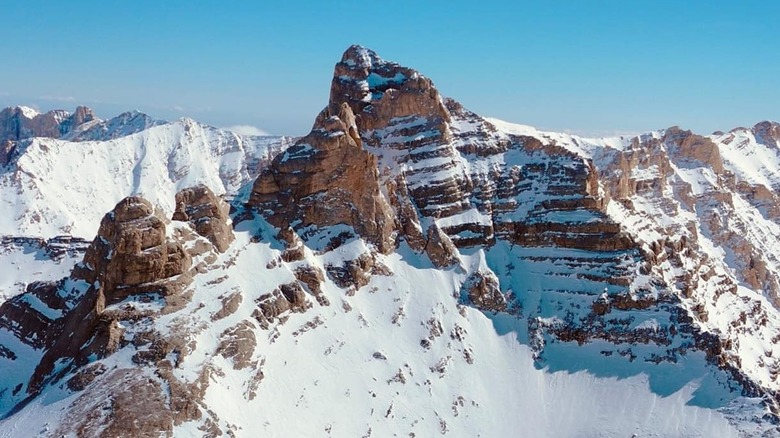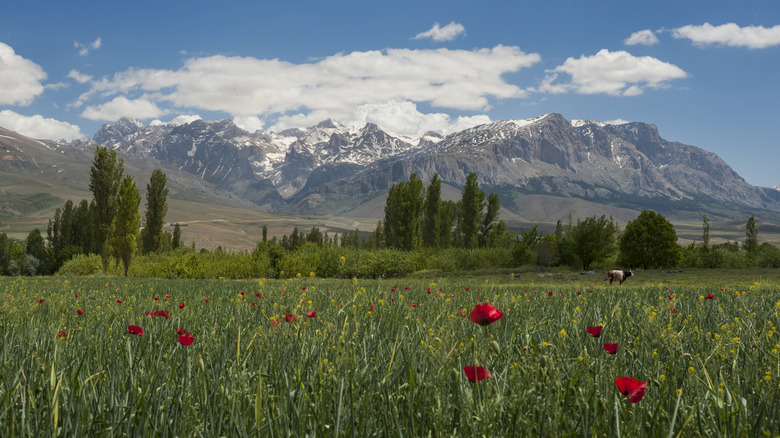Europe's 'mini-Yosemite' Is A Wildly Underrated Turkish National Park With Spectacular Mountain Scenes
Think Turkey, and you'll likely conjure images of Istanbul's ancient wonders, the bucket list-topping sunsets of Cappadocia, or even the beach resorts of Antalya and Bodrum. What might not spring to mind is a spectacular national park that sites like Express have nicknamed Europe's "Mini-Yosemite." Yet the immensely underrated Aladağlar National Park has been luring intrepid travelers to its high-altitude peaks for years, with a fraction of the crowds.
Aladağlar, meaning "Crimson or Red Mountains" for the rust-red tint of the range at sunset, is located around 74 miles south of the popular tourist hub of Cappadocia. Forming part of the Taurus Mountain Range and covering an area of 213 square miles, the high-altitude park boasts four climbable peaks over 11,600 feet, countless multi-day trek options, and a host of other adventure experiences.
Despite its proximity to nearby deserts, Aladağlar is a natural haven. Its lower slopes, blanketed with rich flora and hotbeds for local wildlife, are contrasted in striking fashion by the bleak, snow-capped ridges soaring above, earning its comparisons with Yosemite National Park. But make no mistake, this mountain range sits well off the beaten path, offering an inherently Turkish experience that can't be found anywhere in the U.S.
An underrated mountaineering heaven
With smaller crowds and less tourist infrastructure than nearby Cappadocia, Aladağlar's primary draw is its adventure opportunities. At the top of the list is mountaineering and trekking. The two highest peaks in the park, Kızılkaya (12,372 feet) and Demirkazık (12,326 feet), are challenging climbs no matter which route you take, and it's strongly advised that those new to the region do so with a guide or opt for an easier trek further down the range. Experienced climbers, on the other hand, can take full advantage and opt for complex routes where bouldering and rappelling would be required to summit. It's vital to remember that signage and trail upkeep may fall below Western European and U.S standards.
While Yosemite's Half Dome and other rock climbing trails are legendary, Aladağlar has been growing its reputation as the sport's best destination in Turkey. Hundreds of sport climbing routes have already been installed, as well as dozens of big-wall alpine-style routes offering enough variation to satisfy any avid climber. Skiing and snowshoeing opportunities also reveal themselves in the snowier winter months.
And for those not keen on the higher-adrenaline activities, don't worry. The lower valleys and slopes are majestic, offering easier hikes and gentle walks through alpine meadows and fir forests all in the shadow of the mountains above. Emli Valley and the Yedigöller Plateau are the perfect places to enjoy the park's natural beauty without all the effort. Head there in the spring to see the waterfalls burst into life.
How to plan your Aladağlar trip
Aladağlar National Park doesn't have an airport in its immediate vicinity, so you'll need to fly into either Kayseri or Nevşehir, the two airports serving Cappadocia. (Just make sure you're not caught out by Turkey's new airline rule regarding bags.) Unfortunately, there are no direct public transport routes to the park, so you'll need to navigate to Niğde, the closest major city. From there, you'll find bus links to the park's entry points. Which one you use will depend on where you want to go in the park. Renting a car at the airport can make this a little easier by cutting out the need for local transport. Realistically, the best option is to hire a guide or jump on an organized tour.
Accommodation in the park is affordable but limited to campsites and mountain lodges. Many of these offer guides and tours of the park, helping take away some of the uncertainty. While it is possible to stay farther away in a traditional hotel, being in the park itself will make things far easier and enjoyable.
The park is accessible year-round, but many of the higher peaks will be closed in the winter months for safety reasons. While spring and fall both offer unique atmospheres, summer provides reliable weather, perfect for summiting mountains. Temperatures hover between 80 and 90 degrees Fahrenheit in the summer before dropping at night.


